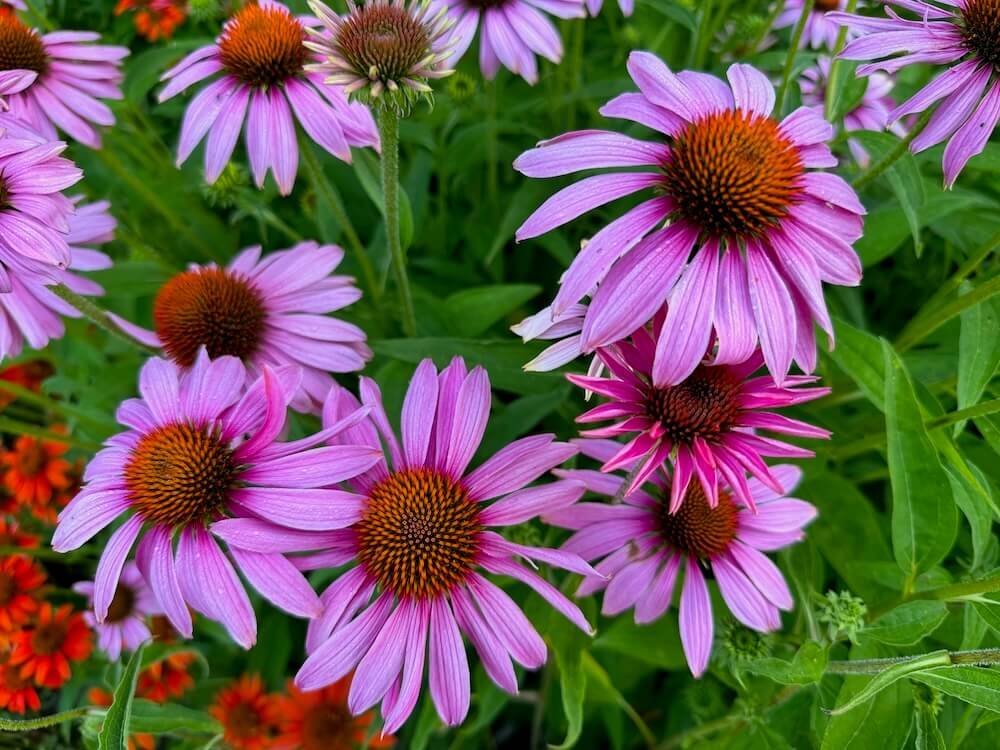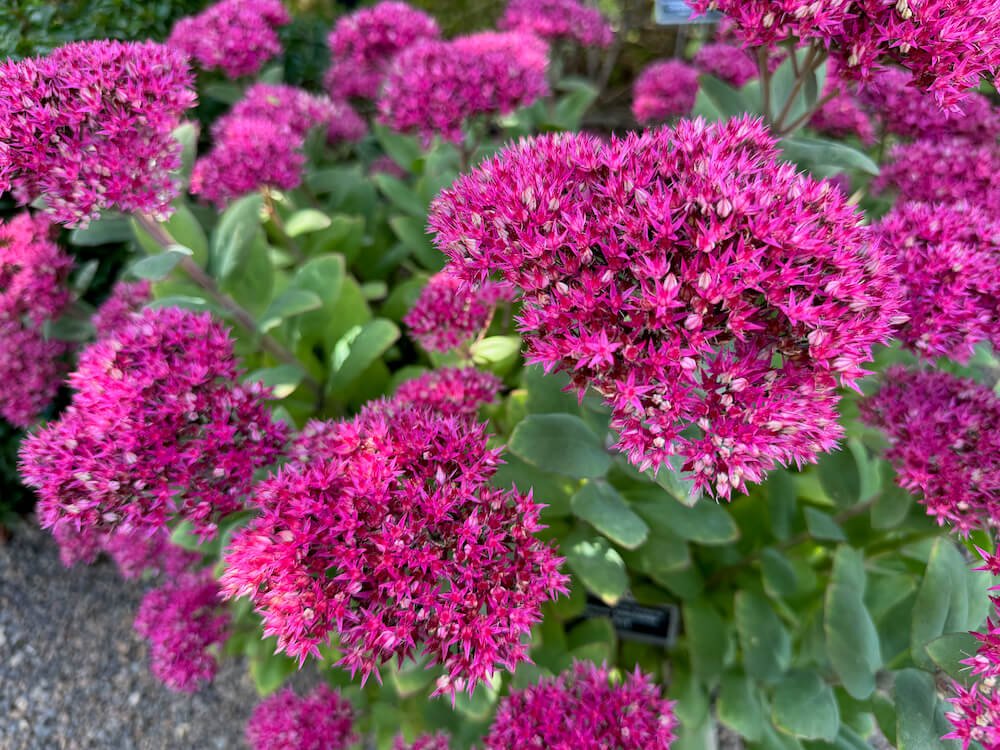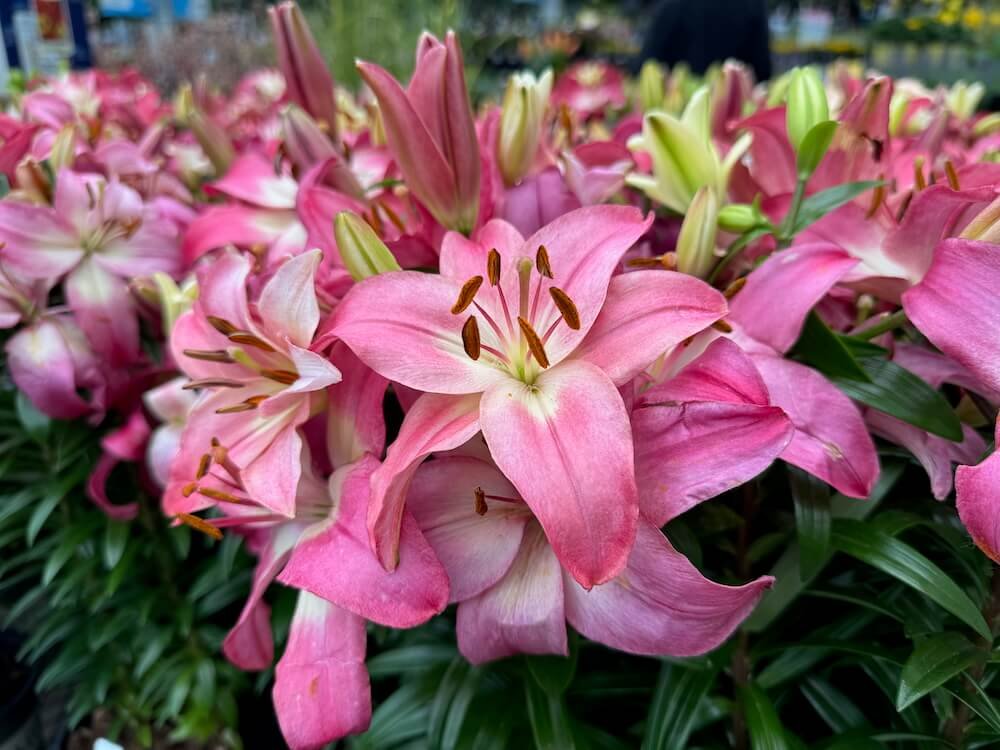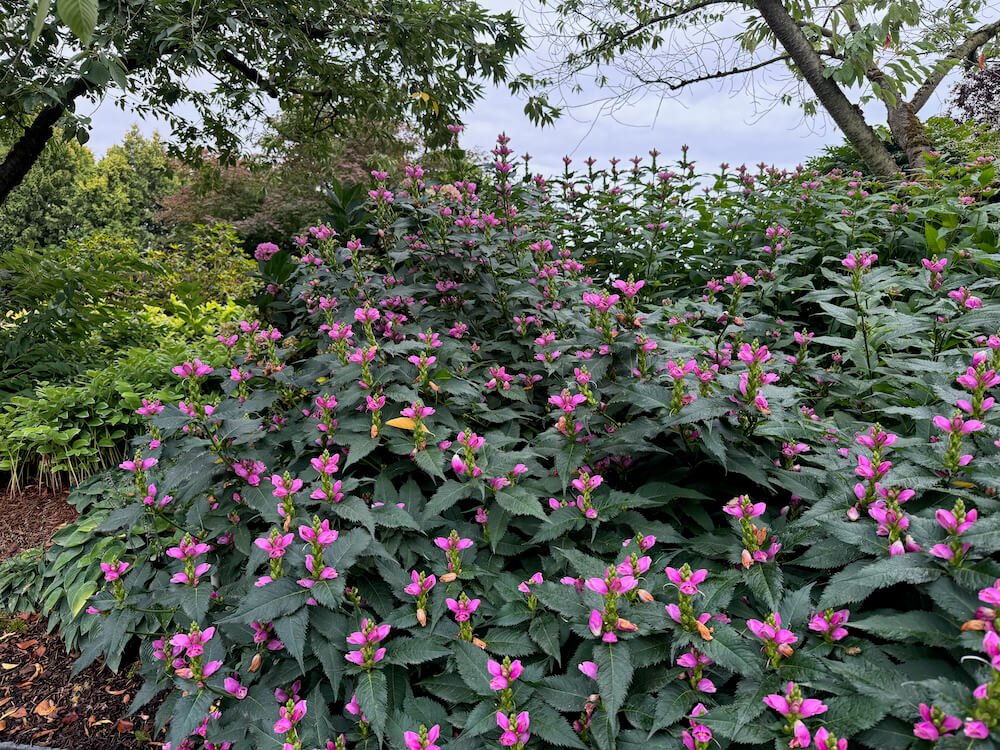 Image 1 of 6
Image 1 of 6

 Image 2 of 6
Image 2 of 6

 Image 3 of 6
Image 3 of 6

 Image 4 of 6
Image 4 of 6

 Image 5 of 6
Image 5 of 6

 Image 6 of 6
Image 6 of 6







Echinacea purpurea | Purple Coneflower
DESCRIPTION
Echinacea purpurea, commonly known as purple coneflower, is a hardy perennial that produces vibrant, daisy-like flowers from midsummer to early fall. The blooms feature prominent, spiky orange-brown centers surrounded by drooping, purple-pink petals, adding bold texture and color to the garden. These long-lasting flowers are highly attractive to bees, butterflies, and other pollinators.
Native to central and eastern North America, Echinacea purpurea thrives in prairies and open woodlands. Its resilience and adaptability have made it a popular choice in cultivated gardens, where it is often used in wildflower meadows, borders, or as part of pollinator-friendly plantings. This species is also celebrated for its traditional herbal uses and ecological value.
DESCRIPTION
Echinacea purpurea, commonly known as purple coneflower, is a hardy perennial that produces vibrant, daisy-like flowers from midsummer to early fall. The blooms feature prominent, spiky orange-brown centers surrounded by drooping, purple-pink petals, adding bold texture and color to the garden. These long-lasting flowers are highly attractive to bees, butterflies, and other pollinators.
Native to central and eastern North America, Echinacea purpurea thrives in prairies and open woodlands. Its resilience and adaptability have made it a popular choice in cultivated gardens, where it is often used in wildflower meadows, borders, or as part of pollinator-friendly plantings. This species is also celebrated for its traditional herbal uses and ecological value.
DESCRIPTION
Echinacea purpurea, commonly known as purple coneflower, is a hardy perennial that produces vibrant, daisy-like flowers from midsummer to early fall. The blooms feature prominent, spiky orange-brown centers surrounded by drooping, purple-pink petals, adding bold texture and color to the garden. These long-lasting flowers are highly attractive to bees, butterflies, and other pollinators.
Native to central and eastern North America, Echinacea purpurea thrives in prairies and open woodlands. Its resilience and adaptability have made it a popular choice in cultivated gardens, where it is often used in wildflower meadows, borders, or as part of pollinator-friendly plantings. This species is also celebrated for its traditional herbal uses and ecological value.
-
Family: Asteraceae
Height: 3 to 4 feet
Width: 2 to 3 feet
Foliage color: Green
Flower color: Purple-pink petals with an orange-brown central cone
Bloom time: Summer to early fall
Light requirements: Full sun
Water requirements: Moderate
Maintenance: Low
Growing zone: USDA Zones 3-8
Wildlife attractors: Butterflies, bees, and seed-eating birds


















